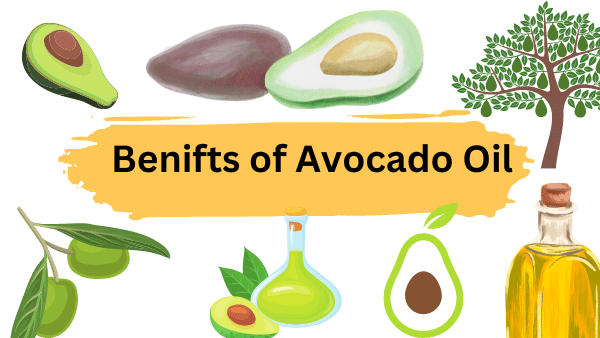Fig fruit is one of the delicious fruits which have been cultivated and grown since ancient times. The Fig plant, known as Ficus Carica, is native to Western Asia and the Middle East but is now grown all over the world. Keep reading to know more about fig fruit, its taste, health benefits and pollination process.
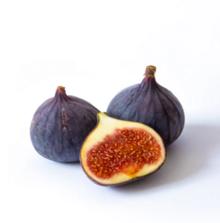
Table of Contents
Health Benefits
- Incredible source of Calcium and Potassium
- High in fibre content
- Prevents constipation
- Useful in the treatment of erectile dysfunction
- Lowers blood pressure
- The taste of fig fruit is honey-like sweetness with a subtle hint of berry
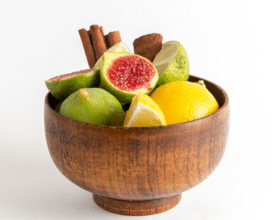
What is Fig Fruit?
Fig fruit is a complicated fruit. In other words, it is not even fruit. It is actually an inside-out flower.
It starts off as a clump of hundreds of teeny tiny flowers trapped inside a fleshy stem.
In addition, a particular kind of insect pollinates flowers and this insect does not make it out alive.
When are Fresh Figs in Season?
Unlike most fruits, figs have distinct seasons. Some of its types like Black Mission, Brown Turkey, Tiger and Calimyrna are available in the market from May to November.
Black Mission: May to November
Brown Turkey: June to November
Tiger: August to September
Calimyrna: July to September
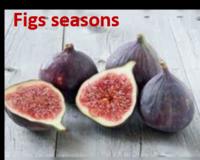
How Long Do Dried Figs Last?
Dry figs can be stored in a refrigerator for six months to a year. They should be stored in a sealed plastic bag.
What is Fig Fruit Latex?
The unripe Fig fruit especially the skin and pulp contains a white milky substance known as latex.
In addition, Latex can cause a burning sensation in the mouth.
How Does a Fig Get Pollinated?
Technically speaking, figs are not fruits, they are actually inverted flowers.
Figs basically bloom inside their pods as opposed to externally like most fruit and plant species.
This means that some species but not all require cross-pollination from the male Caprifigs for the fruit to reach maturity.
Most all commercial figs consumed come from the Melbury family and Ficus Carica species which produces dozens of edible plump fruit cultivars. Generally, there are three main subcategories, classified as the Ficus carica, the Symyrna, and Sand Pedro.
Figs species, for instance, Smyrna are fertilized by a specialized wasp that tightly squeezes through a hole or osteo at the bottom of the fruit.
A female wasp lays eggs and drops pollens inside the internal flowers. Then it dies within the fruit.
The male larva who develops first fertilize the females and then drill holes in the fruit pod which acts as an escape route for the wasps that will later hatch.
It is rare to see or notice the fragments of dead wasps remain in these varieties because most of the times protein is consumed by the latex-derived proteolytic enzyme known as Ficain or Ficin after fully ripe.
Are Figs Vegan?
if you happen to cut open an unripe Smyrna type fig before the ficin has broken down the wasp protein, it will have a dark spot somewhere in the fruit pulp.
However, if you prefer a vegan fig option it is best to select soft Smyrna figs or San Pedro varieties rather than firm ones.
These include the figs such as the mission, Kadota, Brown Turkey, and Canadia so ultimately there is more of a chance that non commercially cultivated figs may contain wasp protein.
How Old is the Fig Tree?
Fig trees are native to Maderterian and the middle east where it is hot and dry. However, nowadays, it grows all over the world.
The Ficus carica species has been widely grown and consumed by humans in regions spanning from Portugal to Afghanistan.
Within the ficus genus, there are other tropical variations on the Indian subcontinent like the Ficus religiosa or this sacred fig tree.
Similarly, the Sycamore is a variety common to numerous areas of the Middle East in addition to Central and South Africa
As one of the first wild fruits domesticated by humans long before other fruit crops.
Likewise, they are considered to be a keystone species helping to sustain wildlife populations in addition to maintaining the structure of many ecosystems because of this feature they are often viewed as Garden of Eden type species with thick foliage and very large green leaves that provide ideal shaped Canopies.
Fig Nutrition
- High fibre food. One large fig provides approximately 1.9g of dietary fibres. The soluble fibre prevents the plaquing of the arteries. As a result, clumps of cholesterol are removed from the circulatory system.
- Good to prevent constipation.
- Contains antioxidants, polyphenols, flavonoids and anthocyanins.
- The fig fruit is rich in minerals including potassium, calcium, iron, magnesium and copper. In addition, It contains vitamin A, E and K.
- These were used in ancient cultures as stimulants, to improve sexual health in both men and women.
- The delicious flavour works as an aphrodisiac, and the amino acids aid blood flow. Therefore, it is effective in erectile dysfunction treatment.
- Figs contain lots of fibres. Therefore, it prevents constipation and diarrhoea.
- Many people eat too much salt and this leads to a deficiency of potassium. This can cause high blood pressure (hypertension). Eating healthy fruits and vegetables such as figs helps to boost potassium and therefore lower blood pressure.
- Eating figs regularly can be an excellent way to help weight loss because the high amount of fibre within makes you feel satisfied and less likely to overeat.
- Figs contain prebiotics which supports friendly bacteria in the gut and digestive system.
- The calcium and phosphorous within figs work together to keep our bones and teeth strong and healthy. These also naturally reduce the risk of Osteoporosis.
- Studies have shown that women who consume a lot of fibre have less likelihood of getting breast cancer.
- Fig plants have been used as a Mediterranean folk medicine for softening calluses, removing warts and deterring parasites. The white sap of the plant is used for these remedies.
Dried Figs
Dried figs are high in sugar and rich in calories, as the sugar becomes concentrated when the fruits are dried.
However, you can store it in the refrigerator for 3 to 4 days.
Steps to get Dried Figs
If you want to store fig for a long time period, you can dry it.
- Take fresh figs off the plant.
- Wash all thoroughly and drain all water.
- Spread them on tissue paper.
- Dry all the fruits for half an hour.
- Cut green stalks.
- Make thorough holes at the centre with a rod.
- Placed them on a tray covered with baking paper.
- Cover them with a cheesecloth in order to protect them from bugs.
- Place the tray in the sun, taking care to turn them two or three times a day.
- Fruit will take between 2 to 5 days of sunlight exposure to be ready.
What Are the Side Effects of Figs?
Figs consumed in excess may cause loose stools. Therefore, We recommend avoiding figs (especially dried varieties) if you have sugar-sensitive health issues like Candida overgrowth. Consult your health care practitioner before adding large amounts of figs to the diet. if pregnant, nursing, or have serious health conditions.
Important Links
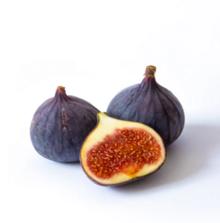
Frequently asked questions
1. What are the health benefits of fig fruit?
They are a great source of fibre and full of vitamins and minerals. They are a good source of antioxidant vitamins A and K that contribute to good health.
2. What do fig fruit taste like?
The taste of fig fruit is honey-like sweetness with a subtle hint of berry. Black mission type is the sweetest. Brown turkey figs have a slightly milder flavor.
3. Can you eat raw fig fruit?
The entire fig is edible, from the thin skin to the red or purplish flesh and the myriad tiny seeds, but they can be peeled and always cut off the stem.
4. Do figs help in weight loss?
Being rich in nutrients like calcium, phosphorus, manganese, potassium, copper, and magnesium, figs can help in increasing metabolism. This will help you in weight loss and keep your body slim.
More Links
Disclaimer: All information is for educational purposes and is the personal view of the authors; not intended as medical advice, diagnosis or prescription. This information has not been evaluated by the FDA and is not intended to cure and prevent any disease.
- BCl3 Lewis Structure in four simple steps - November 1, 2023
- PH3 Lewis Structure in four simple steps - October 8, 2023
- PF3 Lewis structure in four simple steps - September 24, 2023


